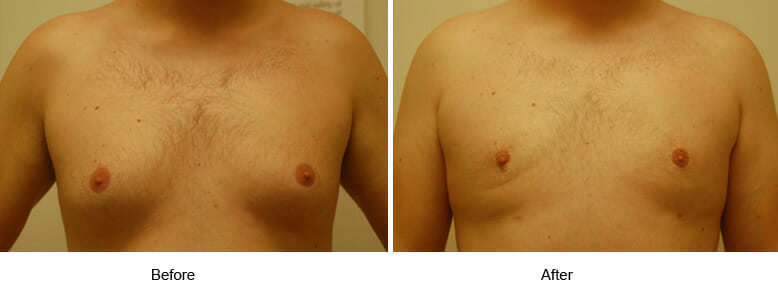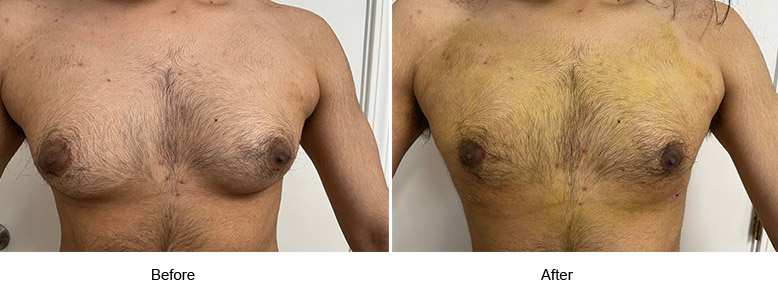- About Gynecomastia Surgery
- Before & After
- How is male breast reduction surgery performed?
- Your Recovery
- Possible Complications
About Gynecomastia?
Gynecomastia is a medical term that comes from the Greek words for “women-like breasts.” An estimated 40 to 60% of men are affected by gynecomastia. Men who are affected my Gynecomastia often feel burdened with a social handicap that causes a deep and complex shame, embarrassment and feelings of humiliation. For many men, the best solution is surgery. If this sounds like you, you’re not alone, Dr Javaheri can help.*
Gynecomastia is performed by diminishing fatty or glandular tissue from the chest area, which improves the shape and contour of the chest by making it flatter and firmer.*
Male breast reduction surgery can be combined with other body contouring procedures such as abdominoplasty (tummy tuck) or liposuction.
Before & After
*Individual results will vary in each patient.
How is male breast reduction surgery performed?
Male breast reduction surgery is an outpatient surgical procedure performed at a surgery center. There are several different treatment options depending on your particular case. If the male breasts are primarily caused by fatty tissue, Dr. Javaheri will use liposuction to reduce unwanted localized deposits of fat cells from the area. Following liposuction, your chest will then be re-sculpted into a more appealing contour.*

*Individual results will vary in each patient.
If the gynecomastia is caused by glandular disorder, a surgical incision would be the method performed. In this method, a small incision is placed on the lower part of the areola or in the underarm area. Excess glandular tissue, fat and skin are excised from the breast. This can be performed alone or combined with liposuction.
This procedure takes approximately 1 to 2 hours, but may vary depending on the complexity of the case.*
Recovery:
The procedure is performed on an outpatient basis.It is common to expect moderate discomfort, bruising and swelling for the first few days. A compression garment must be worn up to 4-6 weeks post-surgery to aide in the recovery process. Some patient be have numbness in areas treated which can last for several months to a year. Most patients return to work in a week to 10 days and resume normal activities in 4 weeks after surgery.*
*Results for each patient will vary. Please remember that the information provided will not guarantee your eligibility for treatment. Consultation and medical examination must be completed before approval.










